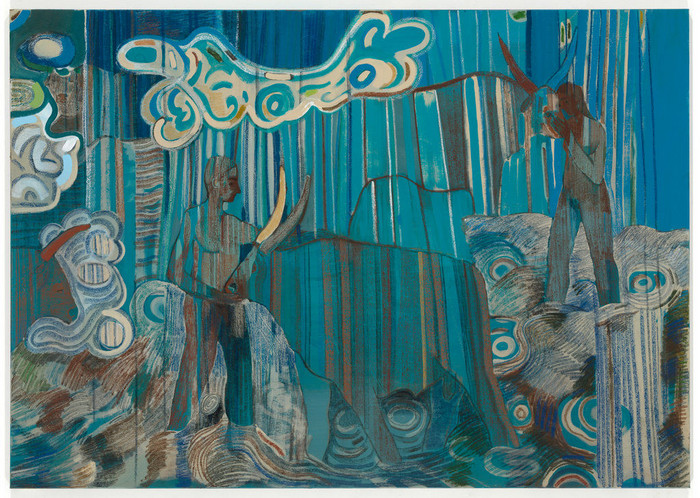Peter Böhnisch
19 Mar - 21 Apr 2011
PETER BÖHNISCH
Kanisfluh
19 March - 21 April, 2011
Contemporary Fine Arts is pleased to announce its first exhibition by Peter Böhnisch entitled “Kanisfluh”.
Peter Böhnisch, who was born in 1977 in Waiblingen, studied at Staatliche Akademie der Bildenden Künste in Karlsruhe with Anselm Reyle and Andreas Slominski.
Initially, Böhnisch’s preferred medium was drawing because it favours a spontaneous and quick capture of the interior images that emerge from the moment, without any rational thinking. As support, he uses not just paper, but also cardboard, wood, or found book pages. Recently, Böhnisch has turned more to the canvas, and here, too, he uses a wide range of materials, such as tempera, wax crayons, pastels, and acrylic paints, which he applies in some places in several layers and textures. Characteristic for his technique is not just that he applies colours delicately, but he also models and shapes the underground into an animated relief.
There are moments of wondering, of movement, dreaming and awakening as well as moments of confrontation with the unknown which the artist reflects in an easily but at the same time elusively accessible pictorial language. The figures often seem to show an inner search for something holy in the human being. Thereby, pictures and memories of different cultures arise. The polymorphic forms and formats are conveyed with an openness in which there is also always a streak of wit and irony.
Kanisfluh
19 March - 21 April, 2011
Contemporary Fine Arts is pleased to announce its first exhibition by Peter Böhnisch entitled “Kanisfluh”.
Peter Böhnisch, who was born in 1977 in Waiblingen, studied at Staatliche Akademie der Bildenden Künste in Karlsruhe with Anselm Reyle and Andreas Slominski.
Initially, Böhnisch’s preferred medium was drawing because it favours a spontaneous and quick capture of the interior images that emerge from the moment, without any rational thinking. As support, he uses not just paper, but also cardboard, wood, or found book pages. Recently, Böhnisch has turned more to the canvas, and here, too, he uses a wide range of materials, such as tempera, wax crayons, pastels, and acrylic paints, which he applies in some places in several layers and textures. Characteristic for his technique is not just that he applies colours delicately, but he also models and shapes the underground into an animated relief.
There are moments of wondering, of movement, dreaming and awakening as well as moments of confrontation with the unknown which the artist reflects in an easily but at the same time elusively accessible pictorial language. The figures often seem to show an inner search for something holy in the human being. Thereby, pictures and memories of different cultures arise. The polymorphic forms and formats are conveyed with an openness in which there is also always a streak of wit and irony.

